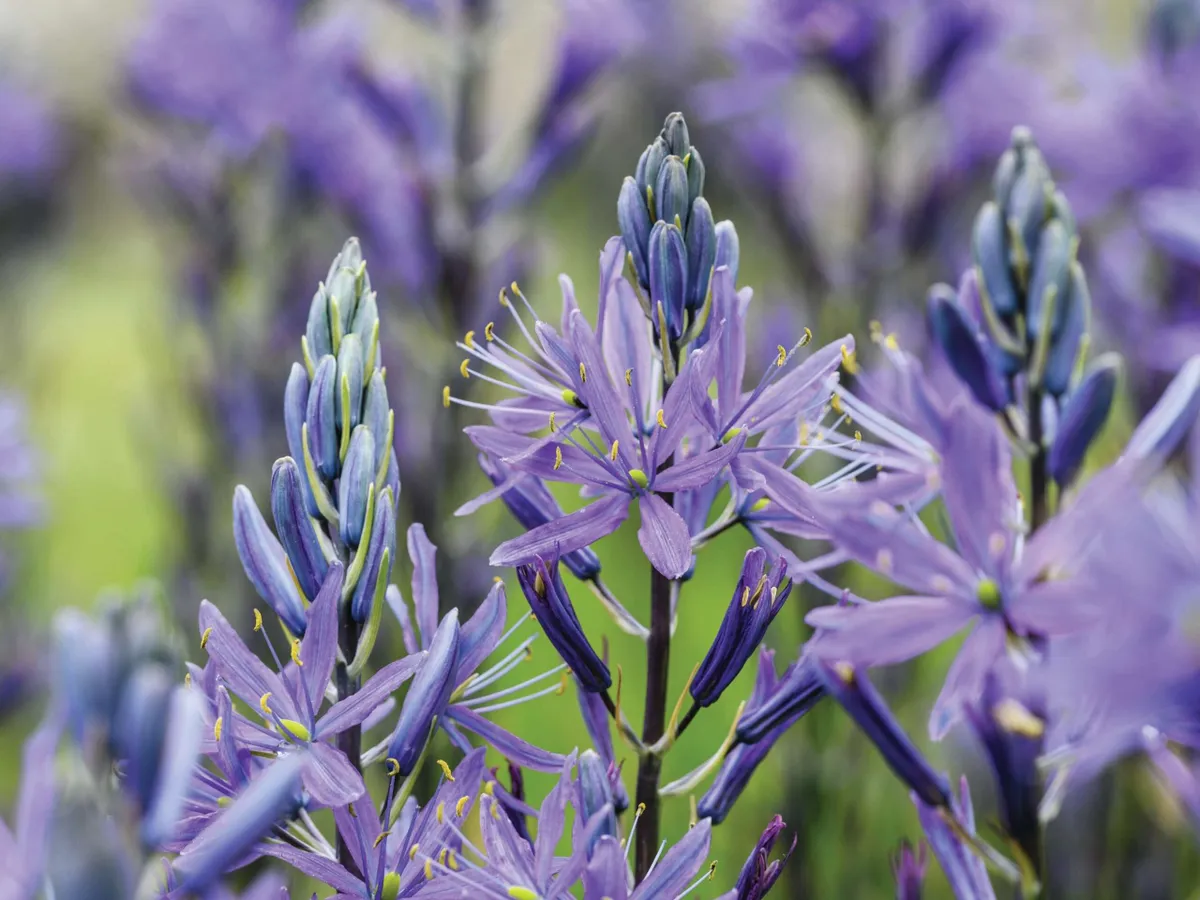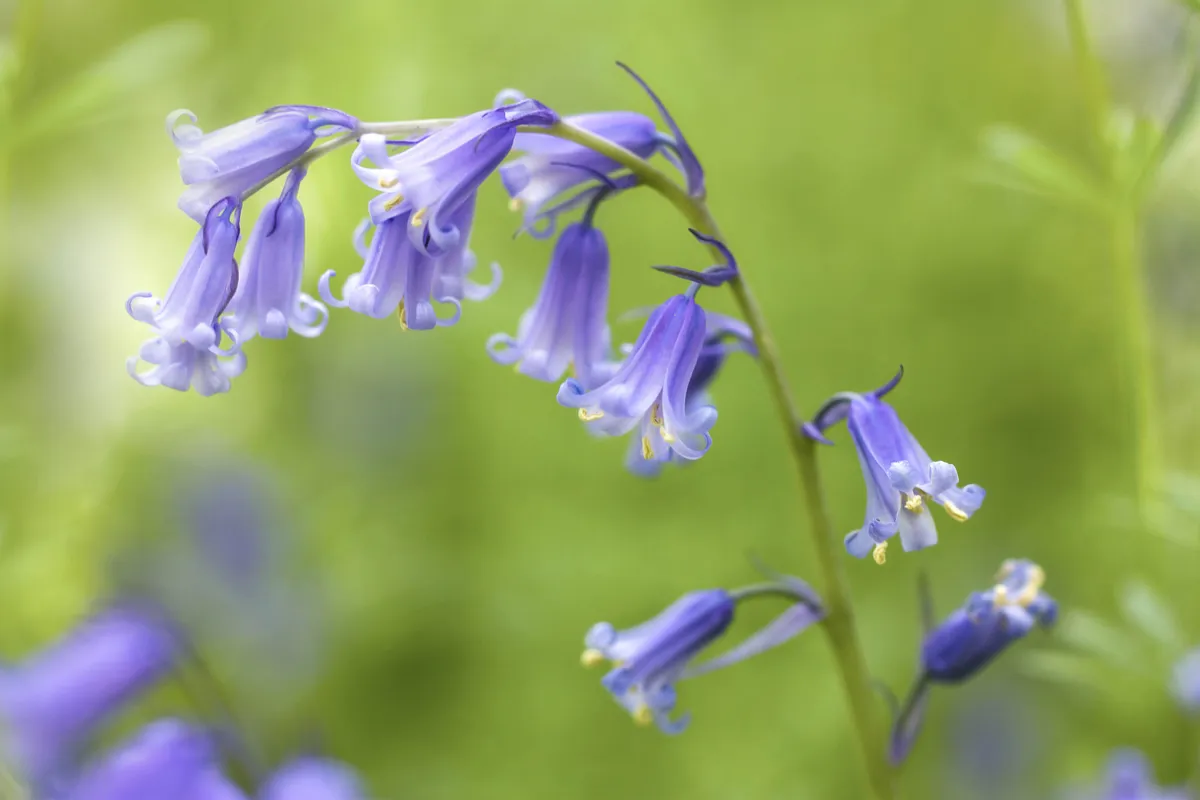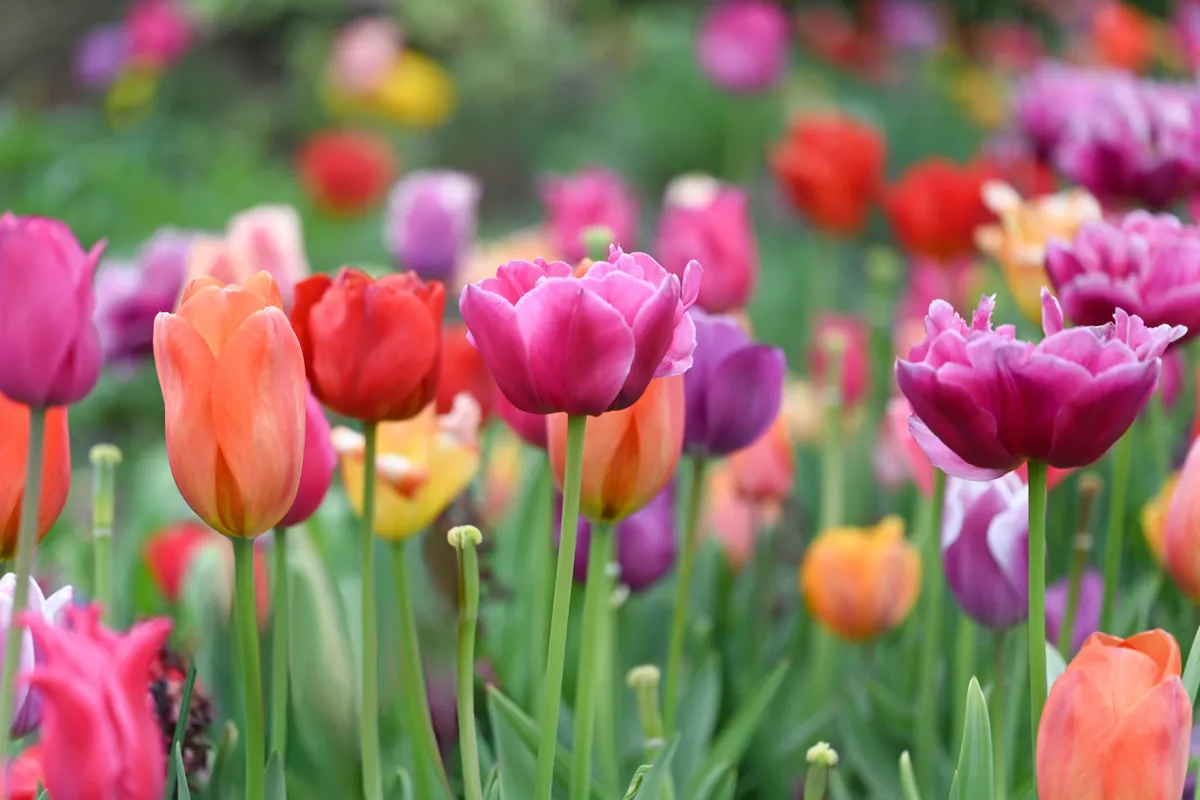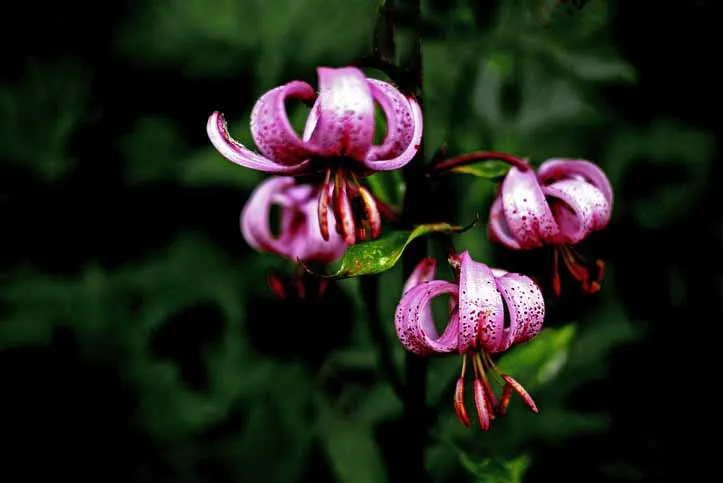Bulbs aren't just for spring - they can provide colour in the garden almost all year round. Grow them in borders or pots, or naturalise them in grass - you could even make a bulb meadow. Most of the bulbs listed below will come back every year, bringing colour and interest to the garden throughout the year. Many will provide much-needed nectar and pollen for pollinators such as bees at times when not much else in flower, especially early in the year. They might help an emerging queen bumblebee in early February or a small tortoiseshell butterfly fooled into waking on an unusually warm day.
Jump to
- Bulbs for late winter and early spring
- Bulbs for mid to late spring
- Bulbs for summer
- Bulbs for autumn
You may also like
- The best bulb suppliers
- When to plant bulbs
- How to plant bulbs in perennial borders
- How late is too late to plant bulbs?
- Watch how to plant bulbs
- How to stop squirrels eating your bulbs
Bulbs that will look great in each season
Bulbs for late winter and early spring
Aconites

Aconites, Eranthis, are among the first blooms to appear in mid- to late January and are much loved by bees during dry weather. They are best planted in humus-rich, alkaline soil that does not dry out in summer. They will establish and naturalise under deciduous trees in light grass. Plant 'in the green' for best success. 15cm.
Snowdrops

Snowdrops also bring joy in late winter. Galanthus nivalis is one of the first flowers that dares to show its head in late January or early February. At its best seen in large swathes carpeting the floors of woodland or the sole occupant of a pot. Its form is strangely similar to a sycamore key, and just beautiful. It is mainly pure white, with fresh green foliage. 10cm. Galanthus elwesii is one of the last snowdrops to flower, in February or March. It is a good one to combine with crocus or scilla (see below) whose blooms soon follow. If the weather is fine snowdrops will be appreciated by honey bees and hoverflies. 12-20cm. Snowdrops are also best planted in the green.
Here's how to grow snowdrops
Crocus

Crocuses are one of the earliest nectar-rich flowers in spring, sought out by emerging queen bumblebees in March. 'Pickwick' (shown above) is a strong-growing Dutch hybrid, ideal for a lawn and flowering after the early species, extending the season. The feathered purple blooms are quite striking and there can often be several per corm. 10-15cm. The rich yellow of Crocus x luteus ‘Golden Yellow’ works well against the low light levels. 8-10cm. Crocus olivieri subsp. balansae ‘Orange Monarch’, named after the monarch butterfly, is a new culitvar I can strongly recommend. The blooms are a beautiful orange – electric without being too loud – and create an exciting atmosphere in an open, naturalised planting scheme. Grow in well-drained soil on a site that has sun in summer to bake the corms. 10-15cm.
Everything you need to know about crocus

Wood anemone

Anemone nemorosa, or wood anemone, is one of our most delicate-looking native flowers. It flowers in early March and is impressive as a block of single colour. Plant in glades, under shrubs and in pots alongside one of the later snowdrops. 13-15cm.
Here's why it's a perfect plant for shady corners
Windflower

Windflowers (Anemone blanda) come in shades of white or blue. Plant under deciduous trees where they will receive plenty of light and moisture early on in spring. March. 15cm.
Grape hyacinths

While all muscari are attractive to bees, Muscari armeniacum is the most favoured and a better choice than Muscari neglectum, which can sometimes be more invasive. In full bloom it can attract gangs of honeybees and other pollinators, such as plume moths and solitary bees. Naturalise in grasslands to disguise the foliage and create an early spring carpet of blue. March. 16cm.
Bulbs for mid to late spring
Scilla

Scilla ‘Blue Giant’ has blue, star-like flowers with bright, white centres. It is an easy bulb to grow on loam soil, given morning sun and afternoon shade. It loves a seaweed feed when in active growth. It flowers in late March. 15cm. Scilla siberica is the best performer for naturalising in light lawns and part shade. The blue nodding bell flowers bloom over a long period, from March to April, and produce more than one stem from each bulb. Plant under magnolias and deciduous shrubs such as Viburnum plicatum f. tomentosum ‘Mariesii’. March to April. 15cm.
Here's our scilla grow guide
Daffodils (narcissus)

Narcissi can bloom from early March to May, depending on the type.
Narcissus 'Minnow' is a sweet and dainty miniature narcissus from the Tazetta group that will naturalise in fine grass and humus-rich soil. Deadhead religiously when the flower goes over, leaving the foliage to die down naturally. Early April. 20cm. Narcissus poeticus is a sweet-scented, elegant narcissus with swept-back, pure-white petals with a red rimmed yellow cup centre. With a longer stem in comparison to its flowerhead it creates such elegance. If it dries out fully its flower will abort, so plant 20cm deep in damper soil. Dislikes disturbance. Often sold as Narcissus poeticus var. recurvus. Late April to early May. 55cm.
Everything you need to know about growing daffodils
Snake's head fritillary

Fritillaria meleagris grows well in damp, humus-rich soil that is free draining and can naturalise happily in grasslands or meadow conditions. Start them off in pots, with five bulbs in a 9cm pot, then as foliage appears in spring, carefully remove the bulbs with as little root disturbance as possible, and plant into their final position. Plant with Fritillaria pyrenaica and Fritillaria meleagris var. unicolor subvar. alba, which also enjoy the same conditions. April. 30cm. AGM. RHS H5, USDA 3a-8b.
Species tulips

Species tulips often flower earlier than the more showy hybrid tulips (see below). Tulipa humilis var. pulchella Albocaerulea Oculata Group is a rare and special dwarf tulip that works best tucked into pots, rockeries or little crannies where it is easily viewed as well as accessible to pollinators. It has delicate white and violet blue in tones. April. 45cm. Tulipa clusiana, the lady tulip, is possibly the best species tulip. Its flowers have attractive dark-pink stripes on its outer petals that widen in the sunshine to produce a star, and the stunning purple markings on its basal stem are sheer beauty. Best to plant deeply in a shaded area. Mid April. 30-45cm.
Our list of the best species tulips to grow
Dog's tooth violet

Erythroniums have delicate, pendular white flowers that hang elegantly above mottled leaves. Flowers hang downwards to protect pollen from rain and are as much loved by honey bees, bumble bees and solitary bees as by gardeners. They prefer a slightly acidic, humus-rich soil. Plant in light shade alongside Anemone nemorosa and Corydalis flexuosa for a beautiful spring combination. April. 15cm.
Our grow guide to erythroniums
Crown imperial

Fritillaria imperialis are tall, eye-catching show-stoppers, producing a ring of terracotta-red, bell-like flowers. Great for bringing height to a spring border. Flowers April – May.
Camassia

Camassia leichtlinii subsp. suksdorfii is the North American wild hyacinth; this species comes in many beautiful tones of blues as well as whites. Unbeatable in clump form, it naturalises in damp, fertile grass in sun or preferably light shade. It pairs beautifully with Narcissus poeticus in a meadow or planting scheme. I also like to use Camassia quamash, which is neater and bluer. April to May. 80cm.
Bluebells

A dramatic show of wild bluebell (Hyacinthoides non-scripta) carpets makes a walk in woodlands a pleasurable spring tradition. In the garden these English bluebells can be planted along hedges and under trees in partial shade. Much loved and savoured by brimstone butterflies and solitary bees. Late April to early May. 35cm. Avoid planting Spanish bluebells - here's how to tell the difference between the English and Spanish bluebells.
Tulips

Showy tulips in every hue work brilliantly studded throughout borders and grow fantastically well in pots. Their display tends to diminish year after year, but some types, such as viridifloras or Darwin hybrids, are more reliably perennial. Discover the best perennial tulips.
Star of Bethlehem

Ornithogalum umbellatum is a lovely example of our native flora. The species is a superb pollinator and an often under-explored delight. Fantastic naturalising bulbs for wild places, borders and pots with long lasting blooms for vases. Plant alongside cowslips and narcissi. Early May. 25cm. RHS H6, USDA 4a-9b.
Bulbs for summer
Alliums

Many alliums flower in late spring and early summer, and have large spherically shaped heads on tall stems, each packed with star-like, pinkish-purple flowers, offer rich provisions for bees, moths and butterflies. Bees also adore Allium siculum, which has tall stems topped with clusters of cream and bronze bells. Early May. 85cm. New breeding means that many newer alliums now start flowering later in the summer, including Allium 'Millennium' and Allium sphaerocephalon.
Pyrenean lily

The scent of Lilium pyrenaicum is not to everyone’s liking but bees and moths love it. Easy to grow, quick to clump in neutral or slightly alkaline soil. A good option for naturalising in lightly shaded grassland. June. 50cm.
Martagon lilies

These are fragrant bulbs that attract nocturnal pollinators, such as night moths and bats, which eat insects from the flowers as well as drinking nectar. Late June. 60cm.
Bulbs for autumn
Nerines

Nerines bloom in late September and flower into November. The leafless stems elegantly rise, where the buds explode into a wavy, recurved, nine-petalled flower. Late September. 50-70cm.
Autumn crocus

Colchicum autumnale has nectar that is only accessible to insects with a long proboscis. Pollinators include moths and butterflies. Works best in damp, fertile meadows but its also suited to gardens with similar conditions. September. 15cm.